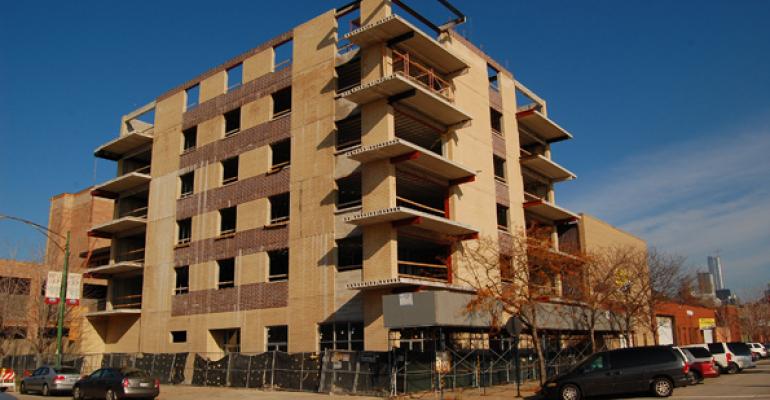Global financial markets are reeling from the drastic steps governments are taking to fight the novel coronavirus COVID-19 pandemic. During the week of March 9, dramatic drops in the Dow Jones Industrial Average signaled the arrival of a bear market for U.S. equities, and European and Asian stocks have also taken a beating.
In the face of uncertainty, individual and institutional investors are taking a closer look at commercial real estate, with a particular interest in the multifamily sector. Unlike office, industrial, retail and hospitality properties that are directly affected by an economic downturn, multifamily tends to be a more stable asset class.
Because a multifamily property has larger base of tenants than an office or industrial building, an extra vacancy or two has relatively little impact on the overall rent roll or continuing income stream. Also, apartment leases are relatively short term, giving owners the flexibility to adjust rental rates up or down based on economic conditions.
Lower interest rates will also drive more investment in real estate. Rather than trying to chase higher returns in the stock market, investors will take a defensive approach, increasing allocations to fixed-income bonds, multifamily real estate and other relatively stable asset classes.
Predictions for the next six months
After a careful review of the coronavirus crisis with the capital and management teams at American Landmark, as well as our major investors, we expect to see the following trends in the next six months as the coronavirus situation evolves:
- An increased flow of funds to multifamily properties in the Southern states, where acquisition costs tend to be lower than higher-priced assets in the Northeast, upper Midwest, California and the Pacific Northwest. Also, the major cities in these states are more likely to be affected by virus-related disruptions in international trade and travel than suburban locations in secondary market.
- Growth in U.S. manufacturing jobs, as multinational companies realize the risks of relying on factories located on the other side of the world. This desire to reduce supply chain disruptions will have the greatest impact on the South, where the business and tax climate is most favorable to manufacturing and distribution.
- Continuing population shift. High urban stress levels in major Northern cities, coupled with job growth in the Southern states, means that the working-age population will continue to grow in states like Florida and Texas.
- Lower propensity to move. More multifamily tenants are likely to stay in their current apartments due to health and economic uncertainties. For owners, that will mean an increase in renewals, lower marketing/leasing costs and increased occupancy rates.
Consider the risks
While these business and demographic trends make multifamily properties in Southern secondary markets more attractive, investors also should consider the risks. For instance, a single coronavirus case at a rental community would disrupt the lives of all residents, perhaps leading to an extended quarantine of the property.
Here are some other suggestions for investors considering an allocation to multifamily:
- Analyze the local development pipeline. Multifamily construction varies from city to city, so investors should take a careful look at the supply side, as well as demand. A recent Marcus & Millichap study, “2020 North America Multifamily Investment Forecast,” has projected household growth this year will be 12 percent above the current cycle’s yearly average with 1.3 million new formations. “This will generate additional demand for rental housing as home sales have remained stable for four years at about 450,000 houses per year,” said the report. “Despite the significant inventory gains, developers have been effective in aligning new supply with job creation and population growth, keeping most markets in the U.S. in balance.”
- Assess the likelihood of short-term layoffs in cities with a high percentage of tourism and travel related jobs, such as Las Vegas or Orlando. Investments may still make sense, though, for buy-and-hold investors.
- Before making an acquisition, investors should also consider the condition of the property, as there may be a shortfall in materials from foreign suppliers. Therefore, a value-add strategy aimed at a quick resale may not be the best approach in 2020.
By choosing the right markets, and taking a long-term approach, investors may find that multifamily assets can serve as a stabilizing force in their portfolios during a time of global turbulence.
Joseph Lubeck if founder and CEO of American Landmark Apartments, one of the fastest-growing multifamily owner-operators in the United States.





